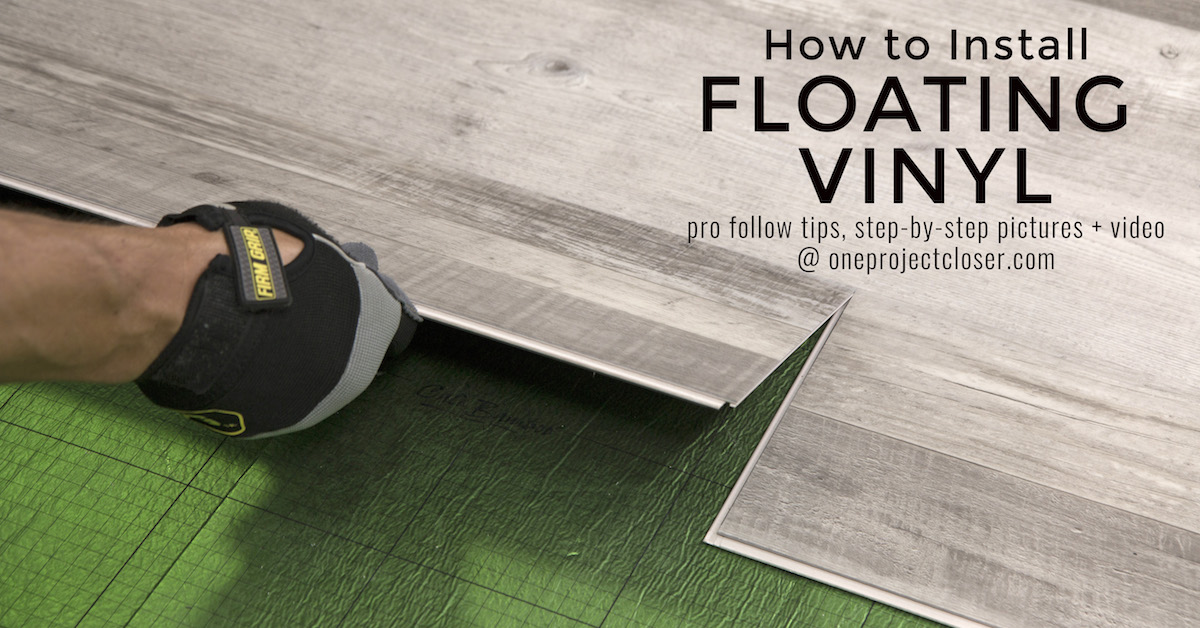Imagine this: you have beautiful tile floors throughout your house, but you crave the warmth and comfort of hardwood. Can you enjoy both without tearing out your existing tiles? The answer is a resounding maybe. Laying floating floor over tiles can be a feasible solution, but it requires careful consideration and preparation.

Image: dragon-upd.com
This article will explore the ins and outs of this popular project. We’ll consider the advantages and disadvantages, delve into the necessary steps, and offer expert tips for a smooth and successful installation. Whether you’re a seasoned DIYer or a novice tackling your first home improvement project, this comprehensive guide will equip you with the knowledge to make an informed decision.
Understanding the Basics
Before we dive into the specifics, let’s define “floating floor.” This type of flooring isn’t glued or nailed to the subfloor; instead, it sits on an underlayment that provides cushioning and sound insulation. The panels connect with a tongue-and-groove system, creating a “floating” effect. This makes installation relatively easy, but it also presents challenges when laying over existing tiles.
Is Laying Floating Floor Over Tiles a Good Idea?
The answer depends on several factors, including the type of tiles you have, the condition of the subfloor, and the material of the floating floor. Here’s a breakdown of the pros and cons:
Advantages:
- Cost-effective: Installing floating floor over tiles can save you the expense of ripping out the existing tile and subfloor.
- Quick and Easy: Floating floor installation is generally faster and easier than traditional methods.
- Aesthetic Appeal: You can achieve a cohesive look by blending the warmth of wood with the durability of tiles.

Image: phenergandm.com
Disadvantages:
- Subfloor Unevenness: Tiles are often laid on a thin layer of mortar, which can create unevenness that affects the floating floor installation.
- Potential Cracking: Tile floors can crack over time, which can translate to cracks in the floating floor. This risk depends on the tile’s condition and the floating floor’s thickness.
- Sound Transfer: Tiles are naturally hard and can transfer sound more readily than floating floor. The added layer can help to minimize this, but it won’t eliminate it entirely.
- Moisture Barrier: Floating floors are not typically suitable for wet areas, and the underlying tiles can trap moisture, making this a potential issue.
Preparing for the Project
If you’ve decided to lay floating floor over tiles, proper preparation is crucial for a successful outcome.
Assessing Your Tiles
Start by carefully inspecting your existing tiles. Look for cracked tiles, loose tiles, or uneven grout lines. These imperfections can impact the overall stability and aesthetics of the floating floor.
You should also check if your tiles are adhered to a solid, flat subfloor. You can tap on the tiles to gauge their firmness. If the tiles sound hollow or move when you tap them, it’s a sign that the subfloor may need repair. In this case, it’s essential to address the issue before laying the floating floor.
Dealing with Uneven Surfaces
Even if your tiles are in good condition, unevenness in the tile substrate can create problems. To assess this, use a level across the tile surface. If you find variations exceeding 1/4 inch, you’ll need to address them before proceeding.
For minor unevenness, there are a few solutions:
- Leveling Compound: This self-leveling compound can fill in small gaps and dips, creating a smoother surface for the floating floor.
- Plywood Underlayment: Attaching plywood sheets to the tile surface can bridge gaps and create a more stable base.
Choosing the Right Floating Floor
The type of floating floor you select is critical. Consider the following factors:
Material:
Hardwood, laminate, or engineered wood are all viable options. Each material has its advantages and disadvantages in terms of durability, price, and aesthetics.
Thickness:
Thicker floating floors (at least 3/8 inch) can help to minimize the impact of unevenness in the tile substrate.
Underlayment:
The underlayment serves as a cushion and moisture barrier. Choose a high-quality underlayment that’s specifically designed for floating floor installation over tiles.
Expert Tips for a Seamless Installation
With the right preparation and materials, you can successfully lay floating floor over tiles. Here are some essential tips to help you along the way:
- Acclimate the Flooring: Allow the flooring to adjust to the room temperature before installation to prevent expansion or contraction issues.
- Leave Expansion Gaps: Remember to leave expansion gaps around the perimeter of the room and between walls and obstacles. This allows for movement as the flooring expands and contracts with temperature changes.
- Use a Moisture Barrier: If your subfloor is prone to moisture, use a vapor barrier beneath the underlayment to prevent damage to the floating floor.
- Proper Tooling: Use the correct tools for cutting and installing the flooring, including a circular saw, a jigsaw, and tapping block.
- Work in Small Sections: Don’t try to install the entire floor at once. Start with small sections and ensure a tight fit before moving on.
Can I Lay Floating Floor Over Tiles
Conclusion
Laying floating floor over tiles can be a stylish and practical solution for transforming your home’s aesthetic. By carefully assessing your existing tile flooring, choosing the right materials, and following the steps outlined above, you can achieve a seamless and long-lasting installation. Remember to prioritize proper preparation, invest in quality materials, and never hesitate to seek the advice of a professional if needed. With the right knowledge and approach, you’ll enjoy the comfort and beauty of floating floor for years to come.





